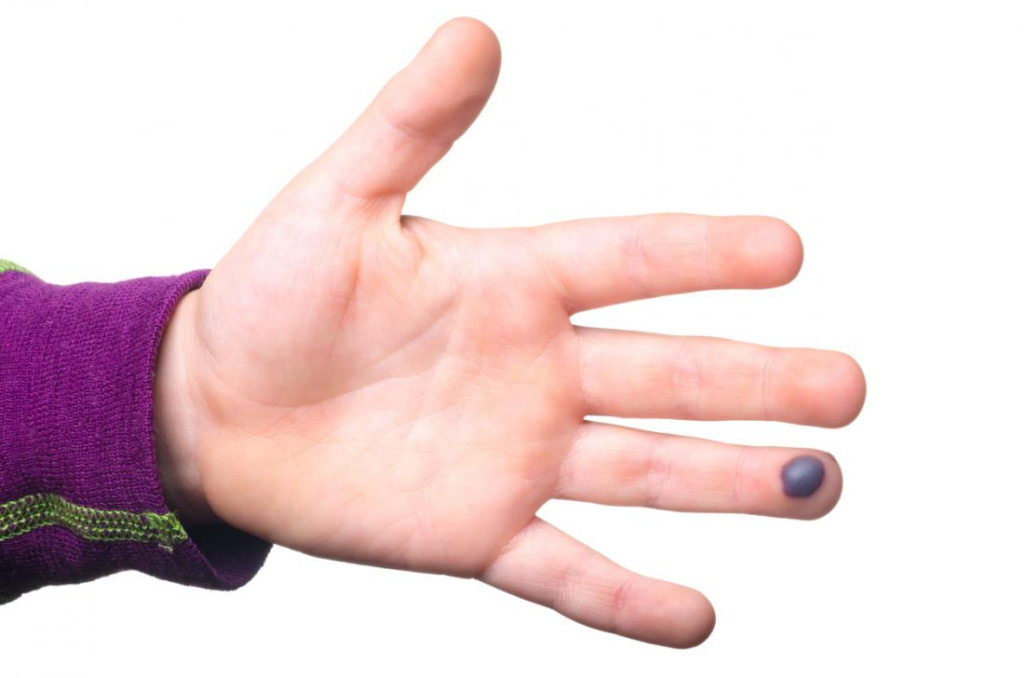Blood blisters on fingers are common occurrences that are often caused by pinching or crushing the skin. They can also be a result of friction, burns, or exposure to chemicals. Regardless of the cause, it is important to treat them promptly to avoid complications. In this article, we will explore the dos and don’ts of treating a blood blister on finger.
Table of Contents
Dos of Treating a Blood Blister on Finger
Clean the Affected Area

The first thing you need to do when you notice a blood blister on finger is to clean the affected area. Use warm water and soap to gently wash the blister and surrounding skin. This will help to remove any dirt or bacteria that may have accumulated on the skin.
Sterilize a Needle
After cleaning the affected area, you can sterilize a needle by boiling it in water for five minutes. Alternatively, you can use rubbing alcohol to sterilize the needle. This will help to prevent infections when you puncture the blister.
Puncture the Blister
Using the sterilized needle, puncture the blister at its base. This will allow the fluid to drain out and relieve the pressure on the surrounding skin. Be careful not to remove the skin over the blister as it provides a natural barrier against infections.
Apply an Antibiotic Ointment
After draining the blister, apply an antibiotic ointment to the affected area. This will help to prevent infections and promote healing. You can cover the blister with a sterile gauze pad to protect it from further damage.
Keep the Affected Area Clean and Dry
To promote healing and prevent infections, you should keep the affected area clean and dry. Change the dressing on the blister daily and avoid exposing the blister to dirt or moisture.
Don’ts of Treating a Blood Blister on Finger
Do Not Pop the Blister
Popping a blood blister on finger can be tempting, but it is not recommended. Popping the blister can increase the risk of infections and delay healing. It can also cause pain and discomfort.
Do Not Remove the Skin Over the Blister

Removing the skin over the blister can expose the underlying tissue to infections. The skin over the blister acts as a natural barrier against infections and should be left intact.
Do Not Apply Ice Directly to the Blister
Applying ice directly to the blister can cause further damage to the surrounding skin. Instead, you can apply a cold compress to the affected area to reduce pain and swelling.
Do Not Pick at the Blister
Picking at the blister can cause it to bleed and increase the risk of infections. It can also cause pain and delay healing. Instead, leave the blister alone and allow it to heal naturally.
Do Not Wear Tight-Fitting Shoes or Gloves
Wearing tight-fitting shoes or gloves can increase the risk of blood blisters on fingers. Make sure to wear properly fitting shoes and gloves to prevent friction and pressure on your skin.
Preventing Blood Blisters on Finger
Blood blisters on your fingers can be painful and uncomfortable. To prevent them from occurring, you can take the following steps:
Wear Properly Fitting Shoes and Gloves
Make sure to wear properly fitting shoes and gloves to prevent friction and pressure on your skin. This will reduce the risk of blood blisters on your fingers.
Use Protective Padding
If you engage in activities that increase the risk of blood blisters on finger you can use protective padding to cushion your skin. This will help to prevent friction and pressure on your skin.
Avoid Exposure to Chemicals
Chemicals can cause skin irritation and lead to the formation of blood blisters on finger. To avoid this, wear protective gloves when handling chemicals or cleaning products.
Take Breaks During Repetitive Activities
Repetitive activities such as typing or playing musical instruments can increase the risk of blood blister on finger. To prevent this, take regular breaks to stretch your fingers and avoid prolonged pressure on your skin.
Keep Your Skin Moisturized

Dry and cracked skin is more susceptible to blood blisters. To keep your skin moisturized, apply a moisturizing lotion or cream regularly. This will help to keep your skin soft and supple.
Conclusion
Blood blister on finger can be painful and uncomfortable, but they can be treated effectively if you follow the dos and don’ts of treatment. Remember to clean the affected area, sterilize a needle, puncture the blister, apply an antibiotic ointment, and keep the affected area clean and dry. Avoid popping the blister, removing the skin over the blister, applying ice directly to the blister, picking at the blister, and wearing tight-fitting shoes or gloves. By taking these steps and following the tips for prevention, you can reduce the risk of blood blister on finger and keep your skin healthy and happy.
Learn about: Stop suffering from painful blood blisters in your mouth! Discover the top tips to prevent and heal blood blister in mouth today.
